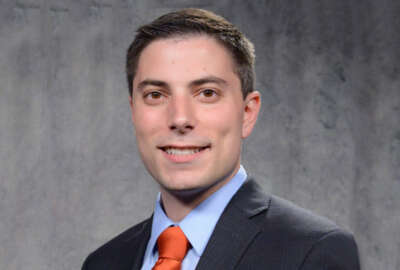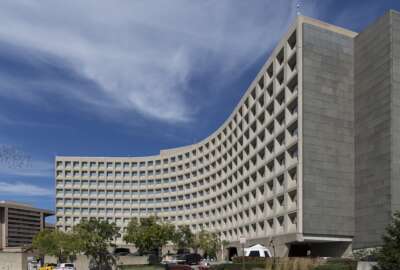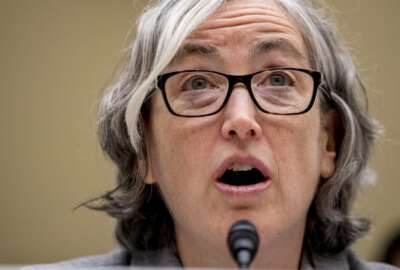Census Bureau senior scientist, Sammies finalist, to thank for game-changing data developments
The Census Bureau's Paul Friday is a finalist in this year's Service to America Medals for his work helping the agency turn handwritten notes or forms into machine...
Best listening experience is on Chrome, Firefox or Safari. Subscribe to Federal Drive’s daily audio interviews on Apple Podcasts or PodcastOne.
Turning handwritten notes or forms into machine readable data has been a challenge for the Census Bureau for decades. And for the last several decennial counts, Census has gotten better and better at it. That’s thanks in large part to the work of Paul Friday. He’s a senior computer scientist with 60 years of service, and a finalist in this year’s Service to America Medals program. He spoke to Federal Drive with Tom Temin for more details.
Interview transcript:
Tom Temin: Mr. Friday, good to have you on.
Paul Friday: Good morning. Pleased to be on.
Tom Temin: My first question is what’s kept you going for 60 years of federal service? Your 59 and a fraction, I guess, at this point.
Paul Friday: Well, there’s two reasons. The first reason is, in my second year of federal service, I was selected to go to be a White House summer intern under John Kennedy. And I met him in the Rose Garden and shook his hand and spoke one or two sentences. And also, he earlier during the inauguration challenged people to not ask what their country can do for them, but what they can do for their country. So that’s carried me and inspired me for my entire career. And there are other people or there were other people in the government who were equally inspired by Kennedy’s challenge to government service. And the second reason I’ve stayed for this amount of time is that in the first half of my career, the government did all of their projects in house with government employees. And we built some spectacular machines and software to assist in doing the Census. And then halfway through my career, the government decided that outsourcing was better, faster and cheaper, and they sideline our internal efforts. So since then, in the second half of my career, I’ve implemented some software for the government that was used in the 2020 Census, and I’ve inspired other people. So in this 2020 Census, there were several teams that put together internal software that was used in production during 2020. And we’re trying to bring back the projects into the government and retrieve them from the outsourcing practice.
Tom Temin: Got it. So you’re a man on a mission. And is it fair to say that in your 60th year of federal service, you are still actively writing code?
Paul Friday: Yes, that’s correct. So that’s my interest, and I’ve done that for my entire career without leaving the technical arena. And going into management, I was always interested in the engineering profession.
Tom Temin: And just out of curiosity, what language are you coding in these days?
Paul Friday: The language that I write in is called Pascal. And it was a language out of the 1970s. And it’s very clear, the style is elegant and classic. So I’ve stuck with that all this time. And the tools that I use are very efficient and allow you to get down to the low level of the machine to write fast code.
Tom Temin: Got it. And what initially interested you in the idea of handwriting or written form recognition? And what was the essential challenge you had to solve to be able to have machines that could do that with some degree of reliability?
Paul Friday: Well, in the 20th century, we built machines that photograph the Census questionnaires to 16 millimeter microfilm, and then scanned it with a device called FOSDIC. And we built all of those machines internally. And OCR was the character recognition, was not mature at that time, and the computers only became powerful enough to do imaging and character recognition in the 2000 Census. And that Census was contracted out to a defense contractor, So I wanted to pull that back into the government. And I spent that time writing software package that would do the character recognition. And we’ve used it for almost 20 years in over 200 different applications for the economic census and the agricultural census, and the decennial census and the American Community Survey. So it’s been very successful, this software package.
Tom Temin: And over the years, other federal agencies, I’m thinking of the Postal Service and perhaps the IRS, have also had a need or an interest in the idea of turning handwriting into usable data. Did you ever collaborate with anyone like that or have you been pretty much Census focused?
Paul Friday: It’s been Census focused, although we’ve done several applications for government customers outside of the Census Bureau, and we also did the decennial census of Kenya and Bangladesh.
Tom Temin: We’re speaking with Paul Friday. He’s a senior computer scientist at the Census Bureau, and a finalist in this year’s Service to America Medals program. And what’s it like being kind of, pardon my expression, the Grand Old Man of programming at Census, when all these relative kids coming through with their C# and their C++ and their Python and etc., etc.? Do you feel you can teach them a thing or two?
Paul Friday: Well, the talent that we got is amazing and the young people that had come into the Census Bureau, have done many of the internal projects that supported the 2020 census are amazing and way beyond my capabilities. So the thing that I contributed was the example of being able to compete against the outsourcing initiatives, and produce internal projects. And so I believe that I’ve inspired several capable, amazing people to produce systems for the 2020 Census. The questionnaire system was produced by a internal team of all government employers and put into place in preference to a contracted system. At the very last moment before 2020 Census started,
Tom Temin: What keeps you going at this point? The technical challenges themselves sound like they still interest you. I mean, what are you working on now for example?
Paul Friday: Well, I’m working on the project that did the 2020 census, where you have to migrate it to other platforms and update it. So that’s one thing and documenting this process is another. And the third thing, of course, is to write the history of this and history of all the employee implemented projects, which have been successful, in contrast to the outsourcing that has produced some spectacular failures. So I would like to drive this process to bring back the projects to the employees in the government.
Tom Temin: And what kind of support did you get over these decades from the various Census directors that come and go?
Paul Friday: Well, I think my work is in the backroom and pretty obscure, but the support that I received is they allowed me to be an independent researcher and produce these things without interfering with it.
Tom Temin: And what do you do to keep yourself current, you’re using Pascal – so how do you stay current with, say, the requirements that Census has, so that you know what to program? And how do you interact with the people on the mission front so that you know what their problems are that then you can translate into code?
Paul Friday: Well, I’m Senior enough to not only be a software producer, but also to understand the requirements in the business end of the Census Bureau. So the fact that that is combined into one person, having mission specific knowledge, and implementation capabilities, is the thing that allows employee generated systems to be so appropriate to task, as opposed to outsourcing projects that have to go through our requirement writers and lawyers and contract specialists at arm’s length. So all of the young people in the Census Bureau now who are producing employee implemented systems have systems expertise in the IT arena, and also business case knowledge all rolled into one person. And you can’t beat that.
Tom Temin: And did you ever have the temptation over the years to chuck it and join some nice private sector startup or one of the big companies? You’d be rolling in dough right now?
Paul Friday: Yes, I had that temptation. But I’m glad that I stayed where I am. because I’ve been able to have an influence that I wouldn’t have had I migrated around to various companies.
Tom Temin: Tell us how you started in federal service.
Paul Friday: My first year in service was in the Army Map Service. One of the projects that we worked on in 1960, was producing the first map of the moon that was going to be used for the Apollo landing site selections on the moon. So I got to work on that before I went to the Census Bureau. And then in 1969, I got to go down to Cape Kennedy, Cape Canaveral at the time, and watch the Apollo 11 takeoff to the moon. So that was kind of a closed loop thing in my career that was very rewarding and satisfying.
Tom Temin: And in between you got to shake President Kennedy’s hand when you were a White House intern.
Paul Friday: When I got to shake hands with President Kennedy in the Rose Garden, President Clinton did the same thing when he was young and got to meet the president and shake his hand. And interestingly, he went on to become the president of the United States – and I stayed in the back room, building hardware and writing software behind closed doors. So that is a contrast that I think about quite often.
Tom Temin: And what’s your plan? How long do you hope to keep working?
Paul Friday: Well, maybe a year or two, I think 60 years is enough for anybody.
Tom Temin: Paul Friday is senior computer scientist at the Census Bureau and a finalist in this year’s Service to America Medals program. Thanks so much. It’s been an honor speaking with you.
Paul Friday: Well, I appreciate it. And thank you for the opportunity.
Copyright © 2025 Federal News Network. All rights reserved. This website is not intended for users located within the European Economic Area.
Tom Temin is host of the Federal Drive and has been providing insight on federal technology and management issues for more than 30 years.
Follow @tteminWFED






